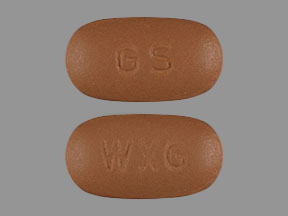Requip XL Disease Interactions
There are 6 disease interactions with Requip XL (ropinirole).
- Neuroleptic malignant syndrome
- Hypotension
- Psychosis
- Cardiovascular disease
- Hepatic dysfunction
- Renal dysfunction
Ropinirole (applies to Requip XL) neuroleptic malignant syndrome
Major Potential Hazard, Low plausibility.
Neuroleptic malignant syndrome (NMS) has not occurred during administration of ropinirole, however, the syndrome has rarely been precipitated by rapid dosage reduction, abrupt discontinuation, or changes in other dopamine agonist therapy.
Dopamine agonists (applies to Requip XL) hypotension
Moderate Potential Hazard, Moderate plausibility.
Dopamine agonists may impair the systemic regulation of blood pressure, with resultant orthostatic hypotension at any time, but especially during dose escalation. Additionally, patients with Parkinson's disease may have an impaired capacity to respond to an orthostatic challenge. For these reasons, patients with Parkinson's disease (or restless legs syndrome) who are being treated with dopaminergic agonists typically require careful monitoring for signs/symptoms of orthostatic hypotension, especially during dose escalation, and should be advised of this risk.
Dopaminergic antiparkinsonian agents (applies to Requip XL) psychosis
Moderate Potential Hazard, Moderate plausibility.
Ordinarily, patients with major psychotic disorder should not be treated with dopaminergic antiparkinsonian agents, because of the risk of exacerbating psychosis. Hallucinations and psychotic-like behavior have been reported with dopaminergic medications. In addition, certain medications used to treat psychosis may exacerbate the symptoms of Parkinson's disease and may decrease the effectiveness of these drugs. The use of bromocriptine in patients with severe psychotic disorders is not recommended.
Ropinirole (applies to Requip XL) cardiovascular disease
Moderate Potential Hazard, Moderate plausibility.
The trials of ropinirole excluded patients with significant cardiovascular disease, hence patients with cardiovascular conditions should be treated with caution.
Ropinirole (applies to Requip XL) hepatic dysfunction
Moderate Potential Hazard, Moderate plausibility. Applicable conditions: Liver Disease
The pharmacokinetic disposition of ropinirole has not been studied in patients with hepatic impairment, however, the serum concentration of ropinirole may be increased and the elimination half-life prolonged in these patients. Therapy with ropinirole should be administered cautiously in patients with hepatic impairment, and dosages titrated according to patient parameters and clinical tolerability.
Ropinirole (applies to Requip XL) renal dysfunction
Moderate Potential Hazard, Moderate plausibility.
Ropinirole is primarily eliminated by the kidney. Less than 10% of ropinirole is excreted unchanged in the urine. No dose adjustment is necessary in patients with moderate renal impairment (CrCl 30 to 50 mL/min). For patients with end-stage renal disease on hemodialysis, a reduced maximum dose is recommended.
Switch to professional interaction data
Requip XL drug interactions
There are 308 drug interactions with Requip XL (ropinirole).
Requip XL alcohol/food interactions
There is 1 alcohol/food interaction with Requip XL (ropinirole).
More about Requip XL (ropinirole)
- Requip XL consumer information
- Check interactions
- Compare alternatives
- Reviews (7)
- Drug images
- Side effects
- Dosage information
- During pregnancy
- Drug class: dopaminergic antiparkinsonism agents
- Breastfeeding
Related treatment guides
Drug Interaction Classification
| Highly clinically significant. Avoid combinations; the risk of the interaction outweighs the benefit. | |
| Moderately clinically significant. Usually avoid combinations; use it only under special circumstances. | |
| Minimally clinically significant. Minimize risk; assess risk and consider an alternative drug, take steps to circumvent the interaction risk and/or institute a monitoring plan. | |
| No interaction information available. |
See also:
Further information
Always consult your healthcare provider to ensure the information displayed on this page applies to your personal circumstances.


